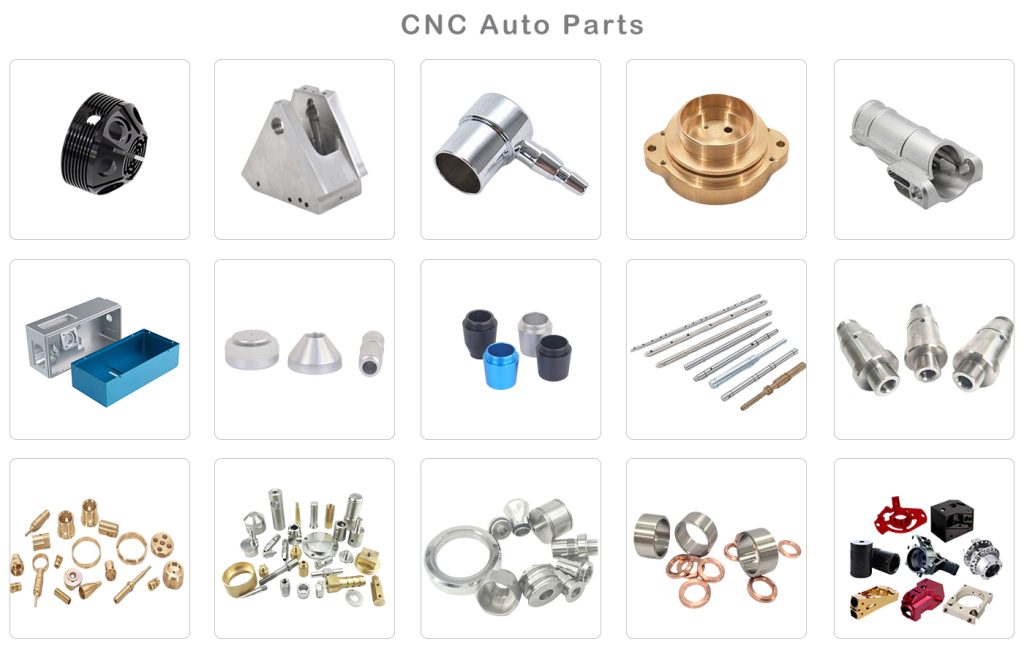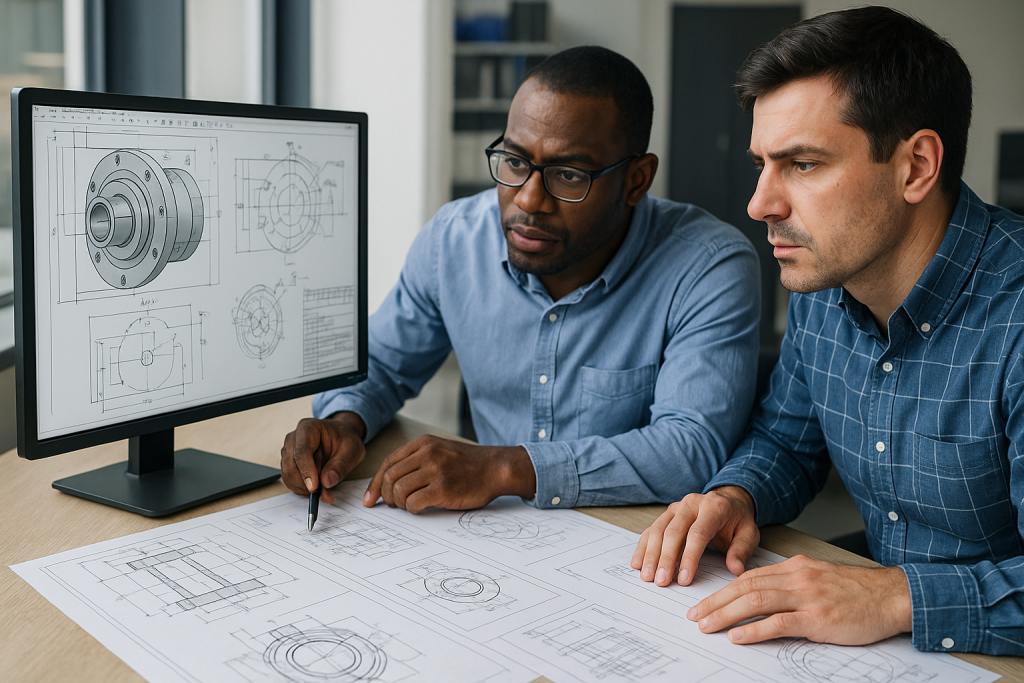
In today’s rapidly evolving automotive industry, precision and speed are everything. Whether it’s high-performance engine parts or complex electric vehicle (EV) assemblies, the need for fast, accurate, and repeatable manufacturing has never been greater. That’s where CNC machining shines.
CNC (Computer Numerical Control) machining enables the production of custom automotive components with incredibly tight tolerances, complex geometries, and a wide range of materials. From concept to reality, companies like Boona Prototypes specialize in turning 3D CAD models into functional parts within days.
Let’s explore five top automotive components that are commonly manufactured using CNC machining—and why CNC is the go-to solution for the modern automotive industry.
I. Engine Components
CNC machining plays a crucial role in manufacturing internal combustion engine parts that must withstand extreme pressure and temperature.
Common CNC-Produced Engine Parts:
-
Cylinder heads
-
Engine blocks
-
Pistons and piston rods
-
Crankshafts and camshafts
Key Technical Parameters:
| Component | Tolerance | Material Options | Application Area |
|---|---|---|---|
| Cylinder Head | ±0.01 mm | Aluminum 6061, Cast Iron | Combustion sealing |
| Piston | ±0.005 mm | Aluminum Alloy | Reciprocating assembly |
| Crankshaft | ±0.01 mm | Forged Steel | Torque transmission |
Why CNC? These parts demand perfect surface finish, internal channels, and oil flow paths. 5-axis CNC machining is ideal for complex engine geometries.
🔗 Learn how Boona Prototypes provides CNC services for functional prototypes and low-volume production.
II. Transmission & Drivetrain Components
Power delivery requires robust, geometrically precise components. CNC machining offers both strength and dimensional reliability.
CNC-Ready Parts:
-
Gear shafts
-
Differential housings
-
Transmission covers
-
Spline gears
| Component | Accuracy | Common Materials | Special Notes |
|---|---|---|---|
| Gear Shaft | ±0.01 mm | 4140 Alloy Steel | Heat-treated for durability |
| Differential Housing | ±0.05 mm | Cast Aluminum, Steel | Includes drilled and threaded holes |
CNC allows for intricate tooth profiles on gears and precise alignment in housings, improving powertrain efficiency and reducing wear.
III. Suspension & Steering Components
Suspension systems demand high strength and fatigue resistance. CNC-machined parts are essential for maintaining vehicle handling and safety.
CNC-Applicable Components:
-
Control arms
-
Steering knuckles
-
Spindles
-
Tie rod ends
| Part | Surface Finish | Load Rating | Manufacturing Benefit |
|---|---|---|---|
| Control Arm | Ra ≤ 1.6 μm | High tensile loads | Durable and lightweight |
| Steering Knuckle | Ra ≤ 3.2 μm | Medium to heavy | Complex 3D geometry |
Suspension components are frequently prototyped and tested using CNC before full-scale production.
🔗 Discover more about Boona rapid prototyping capabilities and how they accelerate automotive part development.
IV. Brake & Safety-Critical Parts
From brake calipers to airbag housing components, CNC ensures that parts comply with the strictest safety standards.
Frequently CNC-Machined Brake Parts:
-
Brake caliper brackets
-
Master cylinders
-
ABS valve housings
-
Seat belt anchors
| Component | Tolerance | Safety Requirement | Material |
|---|---|---|---|
| Brake Caliper Bracket | ±0.005 mm | Heat resistance, rigidity | Aluminum 7075, Cast Iron |
| ABS Valve Housing | ±0.01 mm | Leak-proof channels | Stainless Steel |
Because these parts directly impact passenger safety, CNC’s consistency and precision are non-negotiable.
V. EV & Custom Aftermarket Parts
Electric vehicles introduce new demands, from thermal management to custom housing for batteries and motors.
EV and Custom CNC Applications:
-
Battery casings
-
Motor cooling plates
-
Sensor brackets
-
Aftermarket performance parts
| Application | Precision Level | Design Feature | Suitable Materials |
|---|---|---|---|
| Battery Housing | ±0.02 mm | Heat dissipation slots | Aluminum 5052, Magnesium Alloy |
| Motor Mount Bracket | ±0.01 mm | Vibration isolation holes | Steel, Nylon composites |
Many of these parts are custom-designed, making CNC machining ideal for low-volume and one-off production.
🔗 See how Boona Prototypes supports custom EV component manufacturing through precision machining.
🛠️ Why CNC Machining Dominates Automotive Part Production
| Advantage | Description |
|---|---|
| High Tolerance Accuracy | Supports complex geometries within ±0.005 mm |
| Material Versatility | Metals (Aluminum, Steel, Titanium) and Plastics (POM, ABS, Nylon) |
| Surface Finish Quality | Polished, anodized, bead-blasted finishes for performance and aesthetics |
| Rapid Prototyping | Lead times as fast as 2–5 days from CAD to part |
| Scalability | Ideal for both small-batch and production-level runs |
🔧 Final Thoughts
From combustion engines to next-gen EV platforms, CNC machining is a cornerstone of modern automotive manufacturing. Its blend of speed, precision, and flexibility makes it invaluable for developing parts that meet both safety regulations and high-performance standards.
Whether you need one prototype or a hundred functional units, Boona Prototypes offers industry-leading CNC machining services tailored for automotive innovation. With expertise across metal and plastic materials, and lead times as short as 2–3 days, Boona ensures your ideas hit the road faster.
Need custom automotive parts fast?
📩 Contact Boona Prototypes today via [email protected] or visit https://www.boona-prototypes.com/ to request a quote.
FAQs
Q1: What automotive parts can be made using CNC machining?
CNC machining is commonly used to manufacture high-precision automotive parts such as engine blocks, cylinder heads, pistons, gear shafts, control arms, brake calipers, battery enclosures, and motor housings. These parts benefit from CNC’s ability to achieve tight tolerances and complex geometries.
Q2: Why is CNC machining preferred for automotive prototypes and small batch production?
CNC machining offers fast turnaround times (often within 2–5 days), high repeatability, and material flexibility, making it ideal for prototyping and low-volume runs. Companies like Boona Prototypes specialize in delivering functional CNC parts with rapid lead times.
Q3: What materials are commonly used for CNC automotive parts?
CNC-machined automotive parts are often made from:
-
Aluminum alloys (e.g., 6061, 7075) for lightweight and heat resistance
-
Steel and stainless steel for strength and durability
-
Titanium for high-performance, low-weight applications
-
Plastics (e.g., POM, ABS, Nylon) for interior components or housings
Q4: What tolerances can CNC machining achieve for automotive components?
CNC machining can achieve tolerances as tight as ±0.005 mm, which is critical for engine, drivetrain, and safety-critical components. Boona Prototypes provides precision machining services that meet demanding automotive standards.
Q5: How does 5-axis CNC machining benefit automotive manufacturing?
5-axis CNC machining enables the production of complex parts in a single setup, improving accuracy, reducing time, and allowing for more intricate geometries. This is especially useful for parts like cylinder heads, suspension knuckles, and turbine housings.
Q6: Can CNC machining be used for electric vehicle (EV) parts?
Yes, CNC machining is widely used to produce EV-specific components such as battery housings, cooling plates, motor brackets, and high-voltage insulation covers. These parts require excellent dimensional control and heat resistance.
Q7: How long does it take to manufacture an automotive part using CNC?
With rapid prototyping services from providers like Boona Prototypes, CNC parts can be delivered in as fast as 2–3 working days, depending on complexity and material availability.
Q8: Is CNC machining suitable for aftermarket automotive parts?
Absolutely. CNC is ideal for creating custom or performance parts for tuning, restoration, or one-off builds. It allows automotive enthusiasts and OEMs to create high-quality components without tooling costs.
Q9: How can I request a CNC quote for my automotive part?
You can request a quote by visiting Boona Prototypes’ website or contacting them directly via email at [email protected]. Just upload your CAD file and specify material, quantity, and finish.
Q10: Does CNC machining support both metal and plastic automotive parts?
Yes, CNC machining supports a wide range of materials including aluminum, steel, brass, copper, and plastics like POM and ABS. This allows manufacturers to create both structural and cosmetic automotive components.



